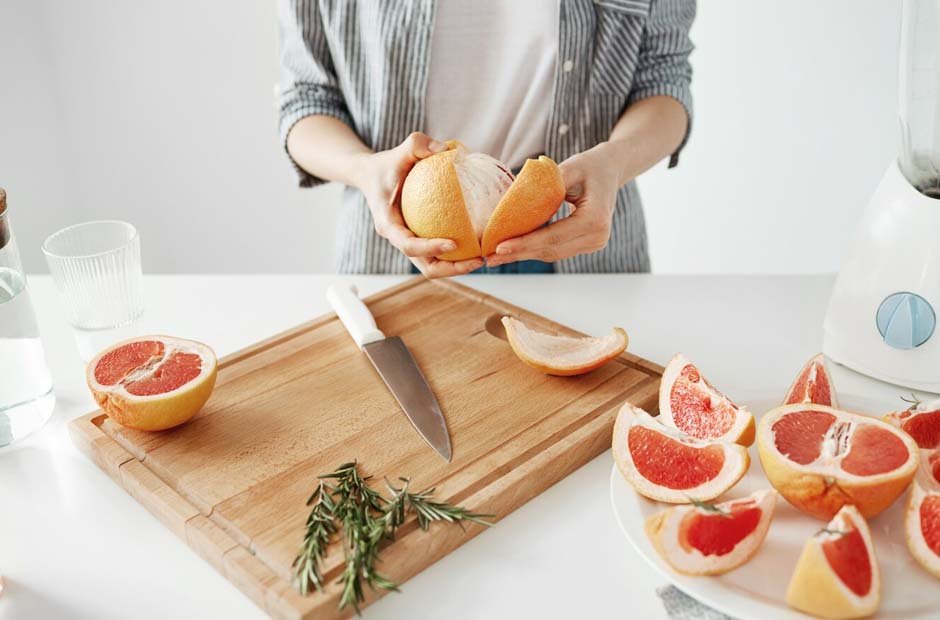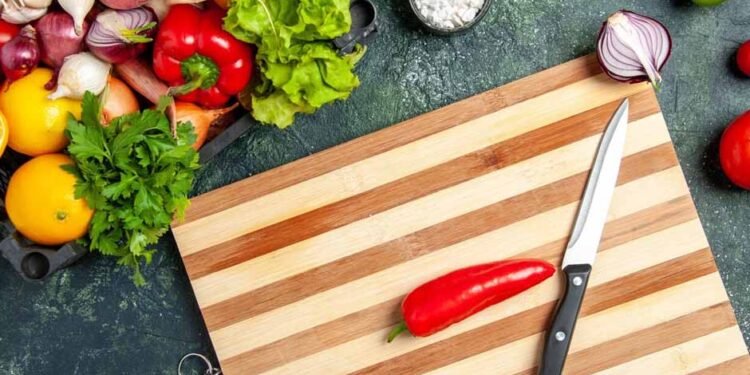Regarding food preparation, having the right tools can make a difference in the kitchen. The cutting board is an essential tool that often goes overlooked. While there are various materials, large wooden cutting boards have been popular among chefs and home cooks for generations. This blog will review the top five advantages of using large wooden cutting boards.
Why Should You Choose Large Wooden Cutting Boards
Durability
One of the most significant advantages of using a large wooden cutting board is its durability. Wooden cutting boards, particularly those made from hardwoods like Maple, cherry, or walnut, can withstand years of heavy use. A large wooden board is less prone to develop deep scratches and grooves that trap food particles and bacteria than a plastic one.
Wooden cutting boards are also less prone to warping or cracking, especially when properly cared for. Regular oiling and maintenance can prolong the life of your wooden cutting board, making it a worthwhile investment for any kitchen.
Knife-Friendly Surface
Wooden cutting boards are gentler on your knives than harder surfaces like glass or stone. The slight give in the wood helps to preserve the sharpness of your knife blades, reducing the frequency of sharpening and extending their lifespan. This benefit saves you money on knife maintenance and ensures a safer and more efficient cutting experience.
Natural Antibacterial Properties
Contrary to popular opinion, wooden cutting boards have inherent antibacterial qualities that can help suppress the growth of hazardous bacteria such as Salmonella and E. coli. Studies have shown that wood can absorb and trap bacteria within its porous surface, where they eventually die off. In contrast, plastic cutting boards with a non-porous surface may allow bacteria to thrive and multiply more easily.
However, it’s essential to maintain proper hygiene by cleaning and sanitising your wooden cutting board after each use to maximise these antibacterial benefits.
Aesthetic Appeal
Large wooden cutting boards add a touch of rustic elegance to any kitchen. They come in various shapes, sizes, and wood types, allowing you to choose one that complements your kitchen decor and personal style. Wooden cutting boards can also double as serving platters for cheeses, charcuterie, and appetisers, making them versatile and attractive additions to your dining table.
Environmentally Friendly
Choosing a large wooden cutting board can be more eco-friendly than plastic or synthetic materials. Wood is a renewable resource that, when collected ethically, may be an environmentally friendly choice. In addition, many wooden cutting boards are handcrafted by artisans that promote ethical and sustainable material sourcing.

Different Types Of Large Wooden Boards
The choice of wood can impact the cutting board’s durability, appearance, and performance. Here are some common types of wood used for cutting boards:
Maple
Due to its durability and hardness, Maple is a popular choice for cutting boards. It has a pale, uniform colour and a fine-grain pattern. Maple cutting boards are resistant to knife marks and tend to be long-lasting.
Walnut
Walnut is a dark hardwood with a rich, chocolate-brown colour and a smooth grain pattern. It’s known for its elegance and durability. Walnut cutting boards can make a stunning addition to your kitchen but may be more expensive.
Cherry
Cherry wood has a warm, reddish-brown colour that deepens with age and exposure to light. It has a smooth feel and a fine grain. Cherry cutting boards are both functional and aesthetically pleasing.
Bamboo
Bamboo is a popular cutting board material because it’s sustainable and durable. Bamboo boards are lightweight, resistant to moisture, and eco-friendly.
Teak
Teak is a tropical hardwood known for its natural oils, which make it resistant to water and insects. Teak cutting boards are highly durable and have a rich, warm colour. They are often used in professional kitchens.
How Do I Clean And Maintain A Large Wooden Cutting Board?
Cleaning and maintaining a large wooden cutting board is essential to ensure its longevity and food safety. Here are the steps to clean and maintain a wooden cutting board:
Hand Wash Only
Dishwashers should never be used to clean wooden cutting boards. The high heat and moisture can cause warping, cracking, and glue joints to loosen.
Use Hot, Soapy Water
After each use:
- Hot, soapy water should be used to clean the cutting board.
- Use a brush or a sponge to scrub away food particles and stains.
- Be thorough in cleaning all surfaces, including the edges.
Rinse Thoroughly
Rinse the board with hot water to remove any soap residue.
Sanitise
To sanitise the board, you can use a diluted bleach solution. Apply one teaspoon of bleach to one quart of water, then to the board. Allow it to sit for a few minutes before rinsing thoroughly with water. For sanitisation, you can also use white vinegar or hydrogen peroxide.
Dry Completely
After washing and rinsing, pat the board dries with a clean towel or air dry it upright. Avoid keeping it in damp or humid conditions to avoid warping and mould growth.
Regular Oil Application
Apply food-grade mineral oil or specialist cutting board oil regularly to prevent wood drying and cracking. A generous amount should be applied to the entire surface, including the sides and edges. Allow the oil to soak in for several hours or overnight, then remove with a clean, dry cloth.
Remove Stains and Odours
If your cutting board develops stains or odours, rub the affected area with coarse salt or baking soda, a cut lemon, or a paste of baking soda and water. Rinse and oil the board afterwards.
Prevent Excess Moisture
Wooden cutting boards are sensitive to excess moisture. Always dry the board after cleaning, and avoid leaving it in standing water or a wet sink. Store it in a dry and well-ventilated area.
Rotate Sides
If your cutting board has two usable sides, consider rotating it occasionally to ensure even wear and prolong its life.
Resurface if Needed
Over time, wooden cutting boards may develop deep cuts and scratches. To correct these flaws, sand the surface with fine-grit sandpaper. Reapply mineral oil after sanding to protect the wood.
Conclusion
Large wooden cutting boards offer many benefits that make them valuable to any kitchen. Their durability, knife-friendly surface, natural antibacterial properties, aesthetic appeal, and eco-friendliness make them a top choice for professional chefs and home cooks. You can enjoy years of safe and joyful food preparation by investing in a high-quality hardwood cutting board and adequately caring for it. So, why not add a touch of elegance and functionality to your kitchen with a large wooden cutting board today?












